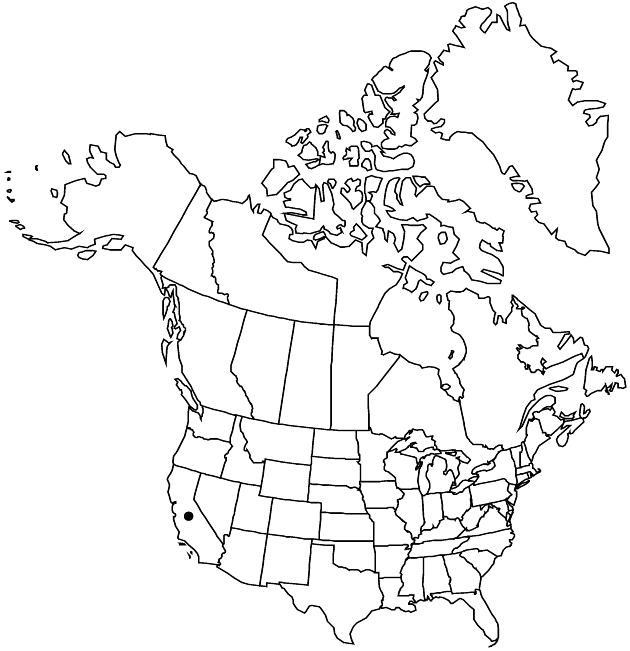Deinandra bacigalupii
Madroño 46: 55, fig. 1. 1999.
Annuals, 10–40 cm. Stems ± solid. Leaves: proximal blades entire or irregularly lobed, faces ± hirsute and stipitate-glandular. Heads in corymbiform or paniculiform arrays. Bracts subtending heads usually overlapping proximal 0–1/2 of each involucre. Phyllaries ± evenly stipitate-glandular, including margins and apices, with nonglandular, non-pustule-based hairs as well. Paleae in 1 series. Ray-florets (6–) 8 (–9); laminae deep yellow, 2–4 mm. Disc-florets (10–) 15–18 (–21), all or mostly functionally staminate; anthers yellow or brownish. Pappi usually of 8–13, subulate to quadrate, fringed to deeply erose scales 0.1–0.8 mm, sometimes fimbriate crowns. 2n = 24.
Phenology: Flowering Jun–Oct.
Habitat: Alkaline meadows, edges of alkali barrens or sinks
Elevation: 100–200 m
Discussion
Of conservation concern.
Deinandra bacigalupii occurs in the eastern San Francisco Bay area (Livermore Valley). Prior to recognition of D. bacigalupii, plants that constitute the species were regarded as northern outliers of D. increscens subsp. increscens.
Selected References
None.
